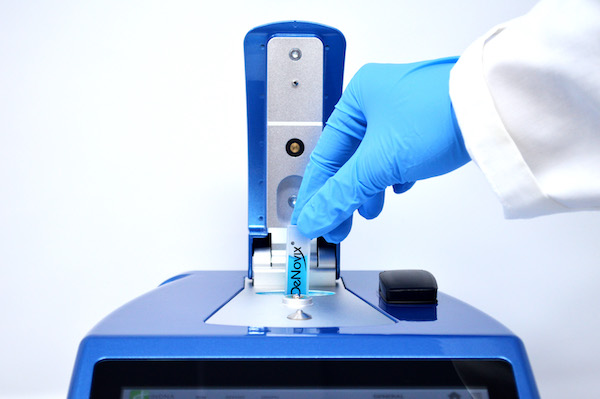RNA quantification is a vital procedure in disease and drug development studies. Particularly, the quantification of small RNA, or microRNAs, are key to developing non-invasive disease biomarkers. Streamlining the process of RNA quantification impacts studies with these important biomedical and health-related applications. This blog post will review a case study of RNA quantification for this specific disease biomarker application as well as the innovative technology able to accomplish it.
The Need for Effective Small RNA Quantification
MicroRNAs, also known as miRNAs, are important gene expression regulators and have the potential to be effective biomarkers of disease in the human body. The ability to conduct small RNA quantification could be an important innovation toward the diagnosis, prognosis and prediction of diseases.
However, challenges to this type of RNA quantification exist and include the obstruction of miRNA detection by hemolysis, the incredibly small size of the sample plasma to be analyzed, and problems normalizing miRNAs in the sample. Multiple methods are often used to identify cases of hemolysis in samples and various assays exist to perform RNA quantification at very low concentrations.
Thus, miRNA quantification has not been standardized across various labs performing biomarker research in plasma. Furthermore, a challenge remains with sample volume normalization. Next, this blog post will briefly discuss the innovative tools used to solve these challenges and ensure effective small RNA quantification.
Conducting Small RNA Quantification with Innovative Tools
A research group utilized advanced instrumentation to specifically conduct and streamline the small RNA quantification procedure. The scientists utilized the Denovix DS-11 spectrophotometer to measure plasma hemolysis from rodent plasma samples. The use of this instrument for hemolysis values in plasma sample pools was found useful and relevant for assessing the viability of these plasma pools for further downstream experimentation and analysis. This ensures more accurate measurements and data collecting while performing RNA quantification methodologies.
The research paper, published in Nature Scientific Reports, concludes that spectrophotometry is a valuable tool in detecting hemolysis in rodent plasma samples. This technology allows scientists to select high quality plasma samples then to undergo general RNA quantification and targeted miRNA biomarker analysis. The results show that this instrument is both sensitive and specific in data collection and analysis. The research supports the use of spectrophotometers to optimize sample quality, a key step in ensuring successful experiments and accurate, precise data.
Small RNA Quantification with DeNovix
DeNovix is an expert in the area of RNA quantification and single cell genomics, and this piece highlighted how our instruments have been used in key studies involving small RNA quantification for disease biomarker development. DeNovix instruments are a powerful solution for life sciences, with a team of experts designing technological solutions that have applied the strengths of spectrophotometer technology to address the challenges the laboratory faces when conducting miRNA quantification.
As an industry leader in advanced instrumentation for life sciences research, DeNovix provides modern solutions to small RNA quantification research questions. We offer products for a variety of advanced procedures that facilitate the efficiency of RNA quantification, including our DS-11 spectrophotometers. With UV-Vis analysis and fluorescence capabilities, this product line performs high-performance absorbance with an intuitive user interface. If you would like to learn more information about RNA quantification or the DS-11 spectrophotometers, please reach out to a member of our experienced team today.




